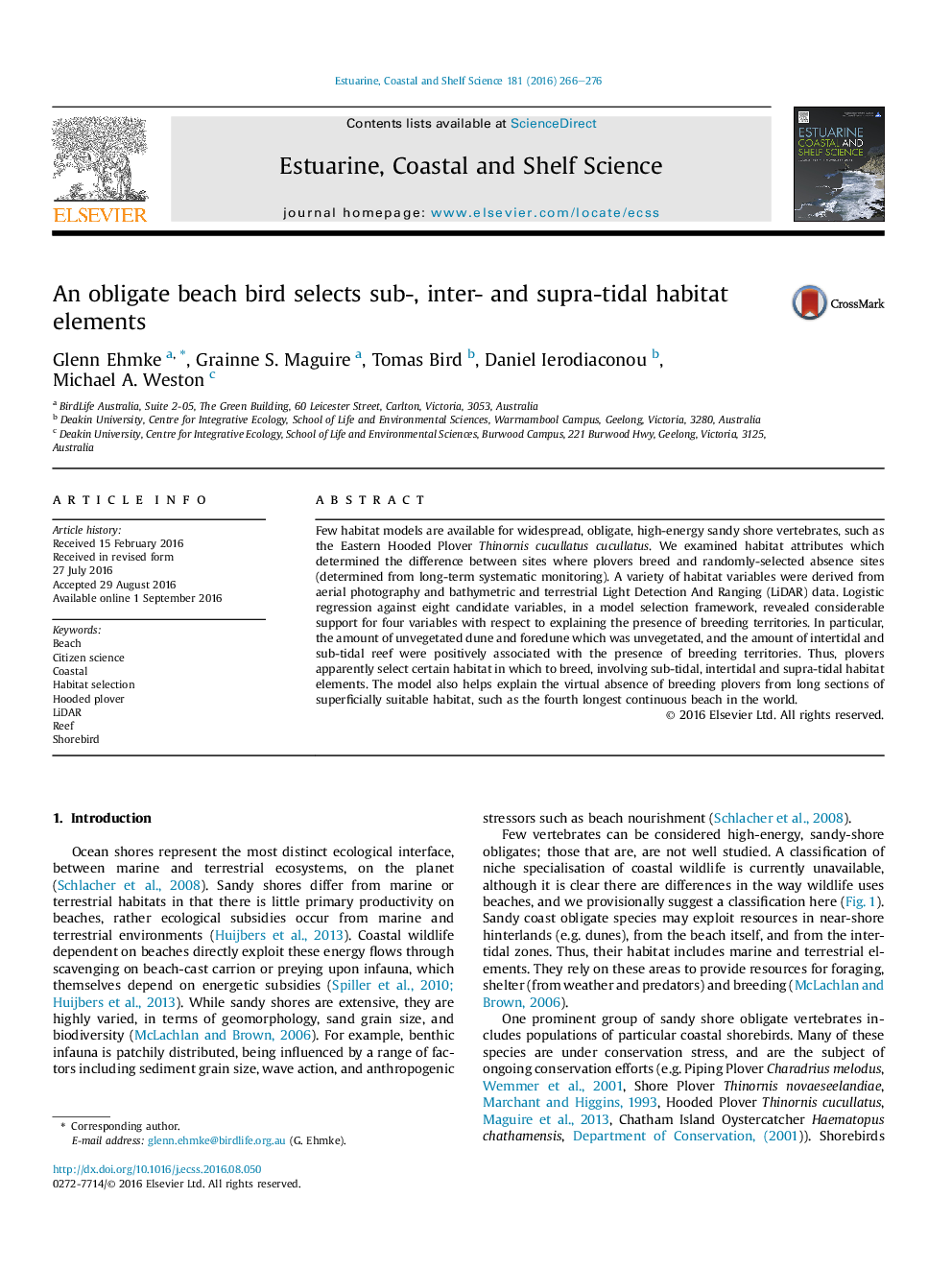| Article ID | Journal | Published Year | Pages | File Type |
|---|---|---|---|---|
| 4539145 | Estuarine, Coastal and Shelf Science | 2016 | 11 Pages |
•Few vertebrates are obligate beach animals.•Sandy shore habitats were quantified using imagery and LiDAR.•Comparison of breeding versus absence sites of a beach plover revealed specific habitat selection.•Marine and terrestrial elements featured in breeding territory selection.•Sandy shore obligate species are both terrestrial and marine animals.
Few habitat models are available for widespread, obligate, high-energy sandy shore vertebrates, such as the Eastern Hooded Plover Thinornis cucullatus cucullatus. We examined habitat attributes which determined the difference between sites where plovers breed and randomly-selected absence sites (determined from long-term systematic monitoring). A variety of habitat variables were derived from aerial photography and bathymetric and terrestrial Light Detection And Ranging (LiDAR) data. Logistic regression against eight candidate variables, in a model selection framework, revealed considerable support for four variables with respect to explaining the presence of breeding territories. In particular, the amount of unvegetated dune and foredune which was unvegetated, and the amount of intertidal and sub-tidal reef were positively associated with the presence of breeding territories. Thus, plovers apparently select certain habitat in which to breed, involving sub-tidal, intertidal and supra-tidal habitat elements. The model also helps explain the virtual absence of breeding plovers from long sections of superficially suitable habitat, such as the fourth longest continuous beach in the world.
